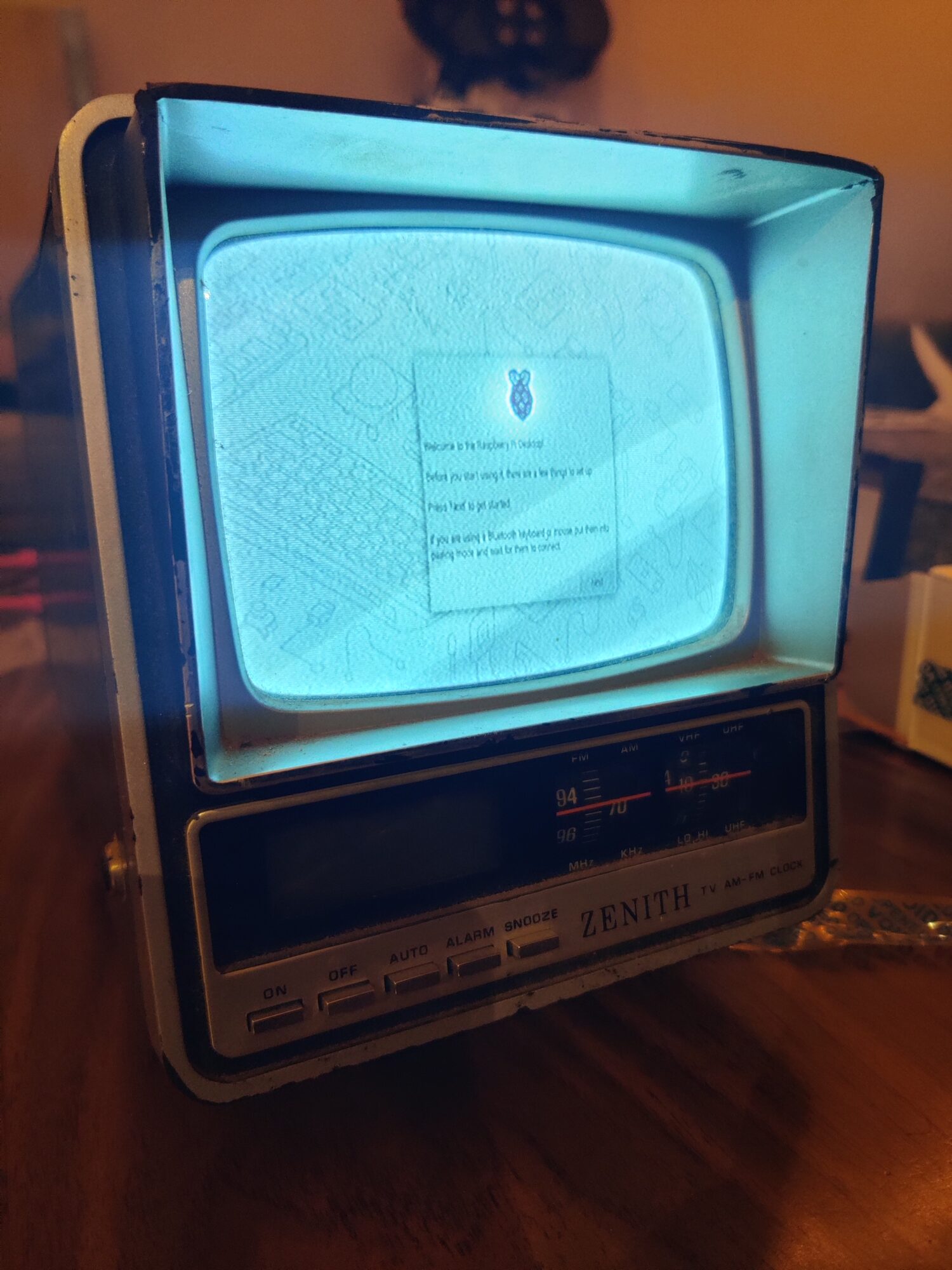Top 5 Specifications:
- Music control functionality/Spotify interface
- The most important part of the project is that it has the ability to actually control my Spotify music library
- Connection to speakers
- To be a worthwhile desktop piece, it is crucial that the device is able to connect to external speakers so that music can be played with good sound quality
- Cassette futurism aesthetic
- The reason for choosing to go with a retro TV as the starting point of the project has to do with the cassette futurism aesthetic. I can control music with my phone or laptop, but it is more unique to do so with older technology
- Physical controls
- I think that preserving the tactile controls in old TVs is significant when combined with a modern computer interface (eg. Spotify)
- Form factor
- Since the project is meant to be desktop hardware, I do not want the final product to be too bulky or take up too much space. However, the screen should be big enough to properly display the music control interface.
TV form factor
Top 5 Constraints:
- Space
- After buying all the necessary hardware to adapt the Raspberry Pi’s display output signal to the old TV’s input, I realized that it may be difficult to fit all of it into the body of the TV. I have yet to take apart the TV to see how much room there is inside, but I think that I will have to fabricate an external enclosure.
- Time
- With the end of the semester coming up and commitments to senior design, I will have to plan accordingly to make time for this project
- Electrical Demand
- With all the electronics needed, it seems like there are multiple plug sockets required to power the project. I do not want to have to plug in multiple plugs if I want to move the device around.
- Display Format/Resolution
- I have been able to get the Raspberry Pi to display on the TV’s screen but it is fairly low resolution. Although I expected this from a 1980s TV, I am not sure if the Spotify interface will be properly legible. I may have to play around with scaling in the software.
- Budget
- I already have all of the main components for the project purchased and I am well under the $200 budget. The only remaining parts will probably be 3D printed, which can be made for free in the ITLL.
Raspberry Pi with display adapters attached
Raspberry Pi interface on TV screen


2 Comments. Leave new
This is looking great so far – good luck on the rest of the project! The texture of the displayed image looks nostalgic as can be. By the way – have you ran Spotify on the Pi yet? I know that Spotify can run really poorly even on properly supported OSes, so I’m worried it won’t like running on Linux.
I have not tried to yet but I’ll keep that in mind. I know that the software I’ll be using is basically a universal music player that talks to the Spotify API service rather than running the full Spotify user interface.